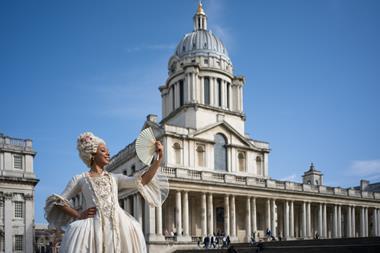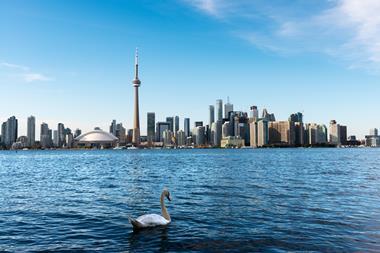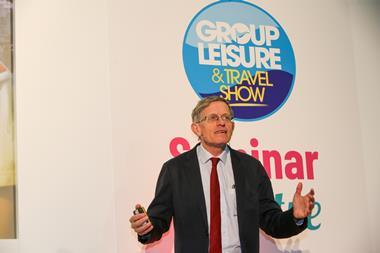A new exhibition now open at the Science Museum explores the worldwide effort to develop a Covid-19 vaccine at a speed to beat the pandemic.
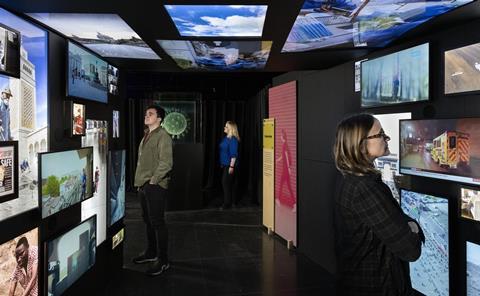
Injecting Hope: The race for a COVID-19 vaccine looks at the huge amount of work that went on behind-the-scenes to create, produce and transport the vaccine around the world after the pandemic took hold in 2020.
Through an array of artworks, interactives and personal objects, the display, which runs until January 2024, aims to make the invisible work visible and reveals the stories of the scientists and innovators who collaborated across the globe to shape the course of our recent history.
There are more than 100 items for visitors to see including the vial of the first Covid-19 vaccine administered, maps drawn up by the British Army to chart the deployment of these across England as well as personal objects belonging to Dame Kate Bingham, former chair of the UK Vaccine Taskforce; professor Dame Sarah Gilbert, one of the creators of the Oxford-AstraZeneca vaccine; and Dr Elisa Granato, the first volunteer vaccinated in the Oxford’s Covid-19 vaccine’s clinical trial.
The Science Museum itself has undertaken important work in response to the pandemic from collecting more than 1,000 objects to create a permanent record of the pandemic, to hosting an NHS vaccination centre within the museum.
About the Injecting Hope project
The Science Museum is the first UK venue to host Injecting Hope before the free exhibition moves to the Science and Industry Museum in Manchester in spring 2024, followed by other sites. In China, the Guangdong Science Center in Guangzhou – the largest science museum in the world – is the first to host the exhibition. In India the first venue is the National Science Center in Delhi, which is accompanied by a mobile science exhibition visiting remote areas.
What to look out for at the exhibition
On entering the display, visitors are taken back to January 2020, as the disease began to spread around the world. Like many in 2020, artist Angela Palmer became fascinated by knowing the virus better.
Working with bioinformatics specialists, she engraved cross-sections of the genomic model of the Covid-19 virus by hand, layer by layer, onto glass sheets, to create a three-dimensional representation. The result, 2020: the Sphere that Changed the World, is a key part of the exhibition: an evocation of the virus that causes Covid-19, it renders the invisible visible.
When a scientist in China released the genetic code of the virus – translating it into an identifying string of RNA – analysis began immediately. Visitors are able to see the genetic code of the virus in its entirety.

The ‘Bad Elf’ T-shirt worn by Professor Tess Lambe as she designed a vaccine over a long weekend is on display alongside brightly coloured leggings with virus and bacteria motifs, part of the truly ‘viral’ outfit worn by Dr Elisa Granato as the first volunteer vaccinated in the Oxford’s Covid-19 vaccine’s clinical trial.
Vaccine rollout
As vaccines showed their effectiveness in clinical trials, preparing to vaccinate billions required a shift from the laboratory to the factory. Vaccine production rates were ramped up to industrial scale. Huge vats of the vaccine were manufactured and both machinery and production line film footage will feature in the exhibition.
The Pfizer/BioNTech vaccine vials are tiny and unassuming, but they made history when they were used for the first time worldwide as part of a mass Covid-19 vaccination programme. The charity T-shirt worn by Margaret Keenan, who became the first person in the world to receive the vaccine outside trial conditions in December 2020, along with the syringe and vial which led her to make history.
Also on display are the notebooks of Dame Kate Bingham, chair of the UK Vaccine Taskforce, which are filled with notes from meetings about the development and deployment of vaccines. Material from the vaccination centre hosted at the Science Museum from March 2021, bring to life how 150 million doses of Covid-19 vaccine were injected into arms throughout museums, mosques and stadiums across the UK.
Future pandemics
Finally, Injecting Hope considers a future with Covid-19 and explores how the response to the pandemic will be built upon for future preparedness.
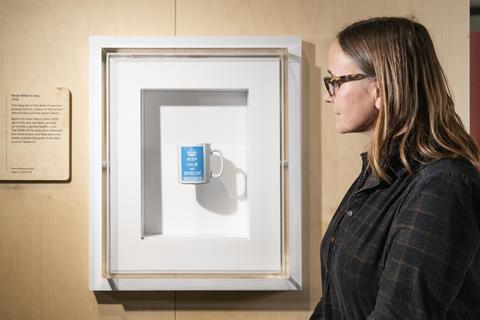
The exhibition comes to a close with Junko Mori’s small-scale piece, Hope in Balance, giving visitors a moment to reflect on their own experiences. This silver and bronze sculpture once again makes the invisible visible, as it depicts the immune system’s response to a virus.
The tea mug that belonged to Professor Dame Sarah Gilbert, one of the creators of the Oxford-AstraZeneca vaccine, stands as a reminder of the intention for the next pandemic: ‘Keep Calm and Develop Vaccines.’
For more information about the exhibition, as well as group bookings, go to www.sciencemuseum.org.uk








